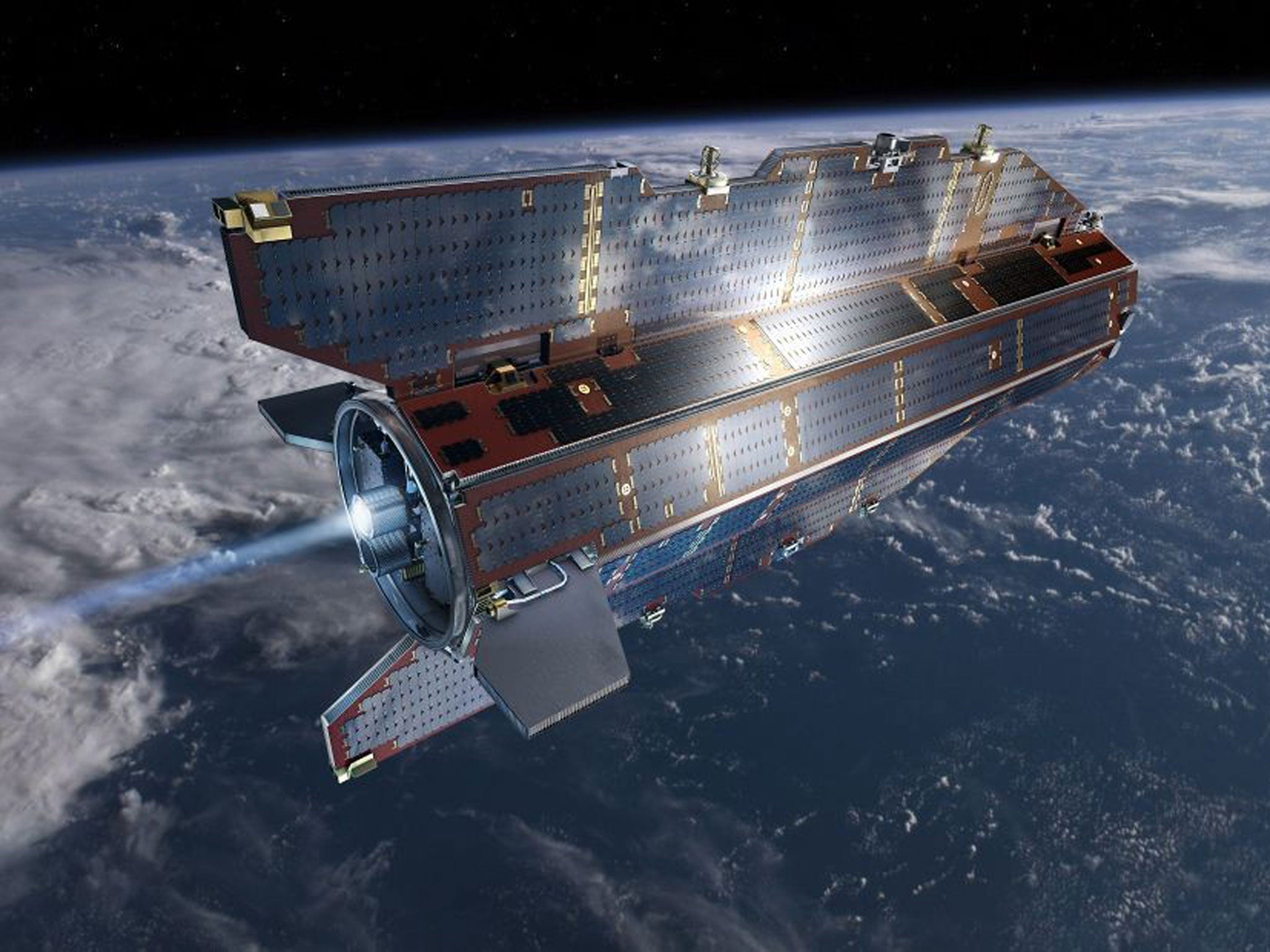GOCE 'space Ferrari' satellite safely re-enters Earth's atmosphere
The satellite has been in operation since March 2009, with its re-entry planned for by scientists and described as only a "small fraction" of annual pace debris

Your support helps us to tell the story
From reproductive rights to climate change to Big Tech, The Independent is on the ground when the story is developing. Whether it's investigating the financials of Elon Musk's pro-Trump PAC or producing our latest documentary, 'The A Word', which shines a light on the American women fighting for reproductive rights, we know how important it is to parse out the facts from the messaging.
At such a critical moment in US history, we need reporters on the ground. Your donation allows us to keep sending journalists to speak to both sides of the story.
The Independent is trusted by Americans across the entire political spectrum. And unlike many other quality news outlets, we choose not to lock Americans out of our reporting and analysis with paywalls. We believe quality journalism should be available to everyone, paid for by those who can afford it.
Your support makes all the difference.A one-tonne satellite that ran out of fuel has safely re-entered the Earth’s atmosphere, burning up during its descent.
The GOCE satellite (‘Gravity field and steady-state Ocean Circulation Explorer’, pronounced GO-chay) was operated by the European Space Agency (ESA), who reported losing contact with the vehicle at 10.42 GMT on Sunday.
The satellite’s last transmission was made from 75 miles above Antarctica as it was directed to towards the uninhabited Southern Ocean, east of New Zealand. Computer modelling predicted that up to 25 per cent of GOCE’s mass might survive re-entry.
“As expected, the satellite disintegrated in the high atmosphere and no damage to property has been reported,” said the ESA in a press release. “On 21 October, the mission came to a natural end when it ran out of fuel. Over the past three weeks the satellite gradually descended.”
Known as the “Ferrari of space" due to its sleek and compact shape, GOCE was a unique craft that used stabilising fins and an innovative ion drive to orbit the Earth at an altitude of 260km – lower than any previous research satellite.
Ion propulsion systems are incredibly low-powered compared to traditional chemical rockets but they allow for precise and steady control, allowing the satellite to tack along upon the sparse wisps of air.
This allowed it produce the most accurate maps of the planet’s gravity ever seen by scientists, with the resulting ‘geoid’ (a hypothetical map of the oceans affected only by gravity and planetary rotation) offering new insight into currents, sea levels and the Earth’s interior.
“The one-tonne GOCE satellite is only a small fraction of the 100–150 tonnes of man-made space objects that reenter Earth’s atmosphere annually,” said Heiner Klinkrad, Head of ESA’s Space Debris Office.
“In the 56 years of spaceflight, some 15 000 tonnes of man-made space objects have reentered the atmosphere without causing a single human injury to date.”
A video from the ESA illustrating the GOCE satellite and the geoid it has produced.
Join our commenting forum
Join thought-provoking conversations, follow other Independent readers and see their replies
Comments